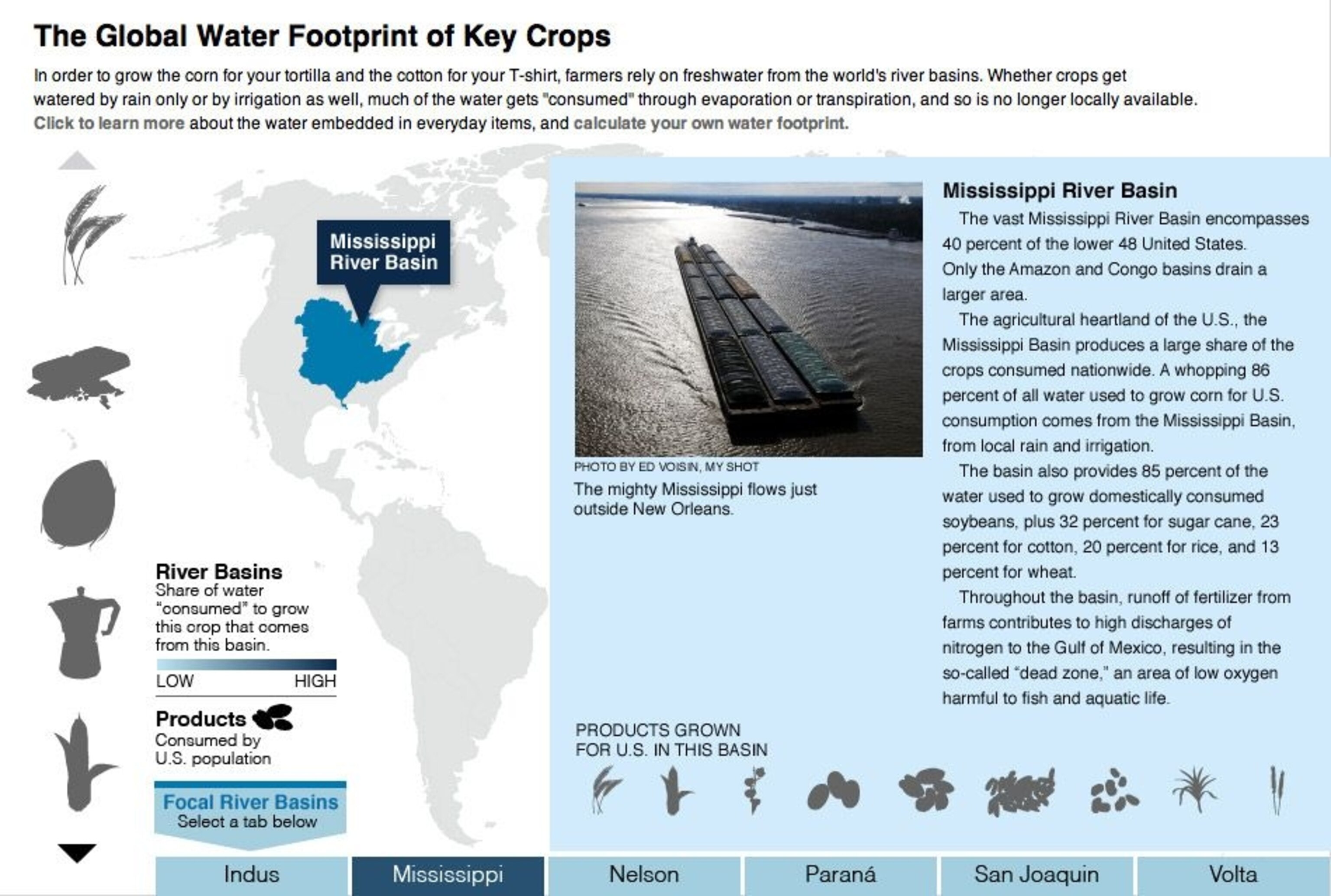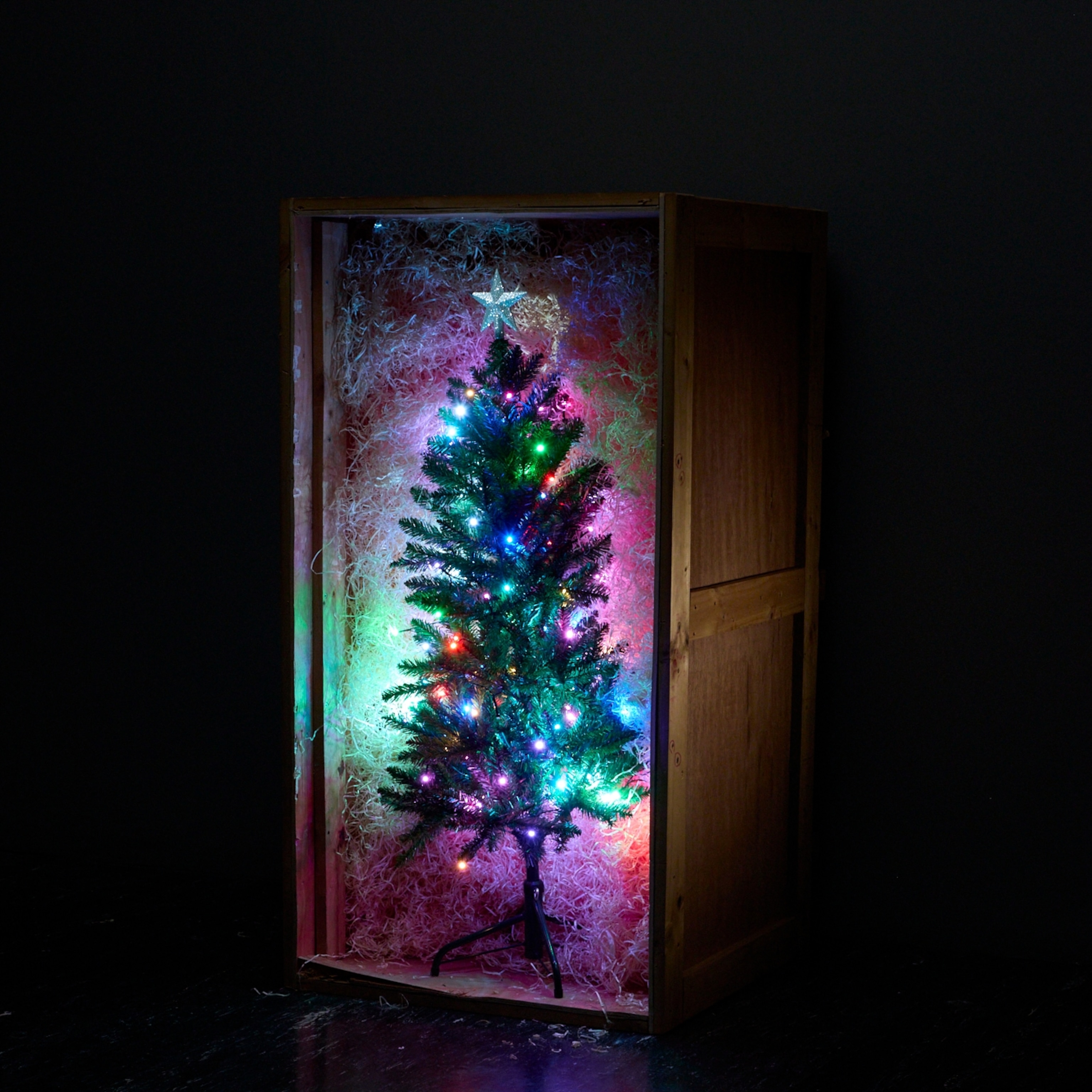
Real Christmas Trees Save Water
Artificial ones have a bigger environmental impact.
This story is part of a special National Geographic News series on global water issues.
Fake Christmas trees might be convenient and seem eco-friendly at first glance, but their environmental costs—measured in greenhouse gas emissions and landfill space—far outweigh their benefits, say conservationists who urge consumers to "stay real" this holiday season.
“All of the environmental groups and all of the scientists say you should use a real tree. The debate is over,” said Rick Dungey, a spokesperson for the National Christmas Tree Association. “The only people still talking about it are the people trying to sell fake trees.”
Artificial trees are made from a kind of plastic called polyvinyl chloride, which is derived from petroleum and can contain lead or other harmful toxins. Furthermore, according to the U.S. Commerce Department, about 80 percent of fake trees are manufactured in China, where most electricity is generated by burning coal—one of the dirtiest fuel sources.
After the trees are made, they must also be shipped across the ocean, usually in diesel-fuel powered ships, resulting in even more greenhouse gas emissions that contribute to global warming.
And even though an artificial tree can be reused, it still has a short life expectancy. "The average family keeps a fake tree for about five to six years, and then it goes to the landfill, where it just sits there because it doesn't biodegrade," said Bill Ulfelder, New York State director for The Nature Conservancy.
In contrast, real trees are completely recyclable, and they are grown in the United States on thousands of farms that employ an estimated 100,000 people.
Additionally, for every real Christmas tree that is sold, about nine more are left to mature and grow to the desired heights on the farms. "There are about 12,000 tree farms in the U.S. that are growing about 400 million trees right now. So there are actually more Christmas trees than there are people living in the U.S.," Ulfelder said.
Until their time comes to be cut, the excess trees will recycle the air, purify groundwater, stabilize the soil, and provide homes for birds, mammals, and insects.
See the global impact of your water footprint >>

Mulch and More
Once the holidays are over, real Christmas trees can be recycled, often for free through one of the more than 4,000 local Christmas tree recycling programs in the U.S. In New York City, for example, old Christmas trees are chipped and used as mulch in Central Park and in flower beds throughout the city.
“They can be used for all kinds of things,” NCTA’s Dungey said. “People use them as fish habitats, as heron nesting grounds, to prevent beach erosion, and to preserve freshwater marshes.”
Real trees do require a lot of water, especially in their early years, but many tree farms are located in regions where water is not scarce, TNC’s Ulfelder said.
"I would argue that the overall benefits of real trees far outstrip any real challenges in terms of the water demand," he added.
(Related: Calculate Your Own Water Footprint)
Dungey agreed. “How much water did the factory in China use to make the fake tree? How much water did the factory that made the raw materials for that tree use?” he said. “And how much water and resources were used to extract the petroleum and metal out of the ground to make that raw material?”
Eco-Friendlier Options
Ulfelder said he is encouraged by the growing number of Christmas tree vendors who are selling organic, or "certified natural," trees, which are raised without the use of synthetic pesticides or fertilizers. Although people may not immediately think "organic" when it comes to trees, since they don't eat them, there is some evidence that spraying chemicals on trees may be affecting the environment and the health of the workers who tend them.
Like organic produce, however, organic Christmas trees usually cost about 10 percent more than non-organic trees.
"Right now, about one-tenth of the 30 million or so real Christmas trees sold each year are organic or certified-natural," Ulfelder said. "If more were produced, that could drive down the cost over time."
Consumers can also look for locally grown Christmas trees, which decrease the amount of fuel required for shipping, plus associated emissions. Supporting local growing operations can also help support local open space and provide some wildlife habitat.
Another eco-friendly Christmas tree option is to buy a still-living tree, which still has the root ball attached and thus can be replanted.
This option may not be for everyone—especially if you live in an apartment or in an area that is not ideal for the growth of firs or pines—but it can be rewarding, Ulfelder said.
(Related: How Much Water Is Embedded in Everyday Things?)
"When I was growing up in North Carolina, after Christmas we would go out and plant the tree," he said. "We did that for a number of years and it was very cool to see those trees continue to grow in the yard."
If you do opt for an artificial tree, try to keep it as long as possible. If you use it for decades, you will actually result in a lower carbon footprint than someone who purchases a natural tree from a conventional outlet year after year. Pass a fake tree down to the next generation, and you'll be spreading even greener cheer.
If you do get a real tree, be sure to recycle it into mulch.








